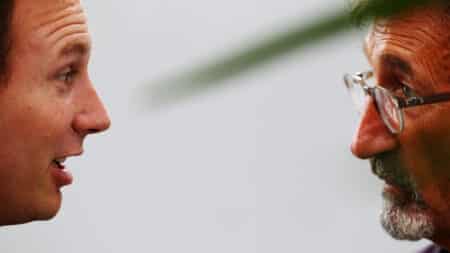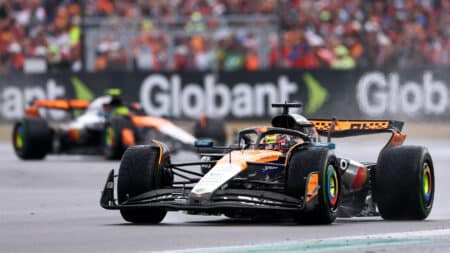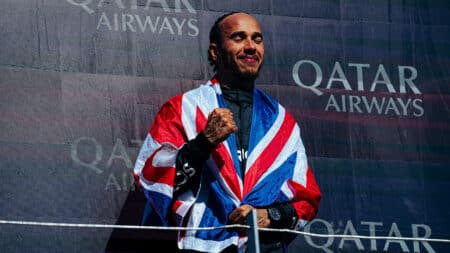
Horner's departure shows age of the maverick F1 boss is over
Christian Horner has now left Red Bull, the last of a certain breed of F1 team principal
A series taken from the 162-page Motor Sport special 100 Greatest Grands Prix (other specials are available here).
From the editor Damien Smith
The Grand Prix motor races we can never forget…
Welcome to this special one-off magazine, dedicated to our love of Grand Prix racing and produced by the same team that brings you Motor Sport each month.
It seemed a good idea: whittle down 107 years of racing history to come up with 100 GPs that could be considered the ‘greatest’ – then rank them in meritocratic order. By week three, the old grey matter was beginning to ache…
Defining greatness was the first task. There were the obvious races – the wheel-to-wheel duels, the comeback classics. But there were also individual performances of supreme dominance, races that might not necessarily have been the most exciting to witness. Greatness goes way beyond thrill-a-minute, we decided.
Then there were those races of prominence, attached to a certain time or place that made them hugely significant. I’m thinking specifically of Belgrade, 1939. Only five entries took the start of a race that didn’t sound particularly scintillating. But as it happened to take place on the very day WWII broke out, we felt it worthy of inclusion. Meanwhile, Sebastian Vettel’s remarkable maiden GP win at Monza in 2008, for lowly Scuderia Toro Rosso, was left on the cutting room floor. Is that fair? You decide. We also opted to include a few races that weren’t Grands Prix, leastways in name, although the strength of entry was such that they might as well have been…
Choosing which races should make the list was hard enough; ranking the top 100 in some sort of order was even tougher, especially when it came to the crunch: which should be number one? We never did agree unanimously on the ‘greatest’, but if the magazine was to be finished a decision had to be taken. And that’s what I’m here for!
Will you agree with our choice and order? Probably not. But if steam begins to issue from your ears, take a deep breath. In any exercise such as this, there is no definitive list – because there can’t be. Our top 100 is based on opinion, nothing more, designed to be a bit of fun and to spark good-natured debate among fans of the world’s greatest sport.
So turn the page, delve in – and whatever you do, don’t take it too seriously.
1933 Belgian GP
July 9, Spa-Francorchamps
Nuvolari in action in the Maserati in Nice that year.
Fernando Alonso falls out once and for all with Luca di Montezemolo, signs a secret agreement to drive a Red Bull, makes his own last-minute design changes before his maiden race in the car – and wins by three minutes. Sounds fanciful? Well, not by the standards of 1933.
Tazio Nuvolari – the Alonso of the 1930s if you like – had finally endured enough of Enzo Ferrari and the team lacking a P3 in the wake of Alfa Corse’s withdrawal from racing. So, after talks with the Maserati brothers, he set up his own team with Baconin Borzacchini, bought the 8CM-3000 previously driven by Raymond Sommer and became a works-assisted Maserati driver. Arch-rival Luigi Fagioli stormed off to replace Nuvolari in Scuderia Ferrari’s Alfa Romeo team.
At Spa, Nuvolari took his Maserati bow – and was horrified to discover how the chassis flexed on the fast Belgian roads. After practice, he took the 8CM off to the nearby Imperia factory and directed as the mechanics got busy welding.
Back at the circuit he’d been drawn on the back row for the start, but wasted little time once the flag dropped. The welding had clearly made a difference. Nuvolari, aged 40, led every lap bar three in the middle of the race, after taking on fuel and new tyres. He left everyone, even the great Achille Varzi, in his dust.
Interestingly, the race is officially Scuderia Ferrari’s only win using a Maserati. As a contractual compromise between driver and team, the 8CM was entered under the name of the Prancing Horse – even if it didn’t carry the now-famous yellow shield on its flanks. DS

Christian Horner has now left Red Bull, the last of a certain breed of F1 team principal

Was Oscar Piastri the real winner in the long run after Silverstone? asks James Elson

Lewis Hamilton hadn't won in almost three years – and then produced a sensational victory at Silverstone 2024. James Elson explains why it was his best ever

Describing this year's championship race as a 'battle' might be slightly over-egging it, writes James Elson